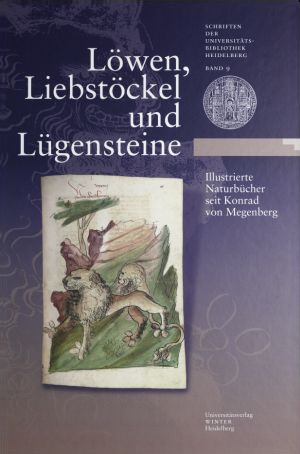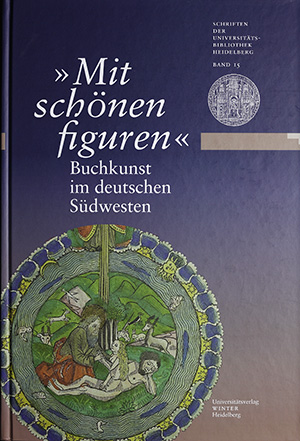Krenn, Margit
Löwen, Liebstöckel und Lügensteine: Illustrierte Naturbücher seit Konrad von Megenberg
Konrad von Megenberg is considered a late medieval pioneer of German scientific prose directed at a lay audience. On the occasion of his seven-hundredth birthday, Heidelberg University Library devoted an exhibition to his best-known work, “buch von den natürlichen dingen”, also known as “Buch der Nature” (“book of natural things”or “Book of Nature”), a prototype of illustrated natural history books. The Heidelberg Bibliotheca Palatina comprises as many as four medieval manuscripts of this work. Two of these manuscripts are richly illustrated.
According to the medieval scholastic worldview, Konrad von Mengenberg starts his investigation with humans and the cosmos, before systematically organizing “the natural things” of the three kingdoms of nature – zoology, botany, and geology. In the late Middle Ages the tradition of this work was combined with memorable illustrations. Like the texts, they were based on a long tradition and were themselves widely received until the modern era.
More information and "Virtual exhibition".
"Mit schönen figuren": Buchkunst im deutschen Südwesten
The transition from handwritten to printed books occurred in stages between the middle of the 15th century and around 1500. For over half a century both forms existed side by side. The relationship between the handwritten and the printed book ranged, via changing and reciprocal influences, from pure imitation to competition between the technical and functional means of expression.
The focus of both catalogue and exhibition are artistic book decorations from specific genres: brush painted ornate decorations and borders, figurative pen and ink drawings and overlay miniatures are contrasted with series of wood cuts and printed vignettes.
The exhibition guides visitors through the years 1430 to 1530, using selected examples from the collections of the Württembergian State Library Stuttgart and the University Library Heidelberg. As well as the technical and cultural interplay of this transition phase with relevant examples of the appearance of books, the roles of those commissioning, selling and owning books are also presented. They often significantly influenced the expressive form and content of book decoration as books were also a form of status symbol.




